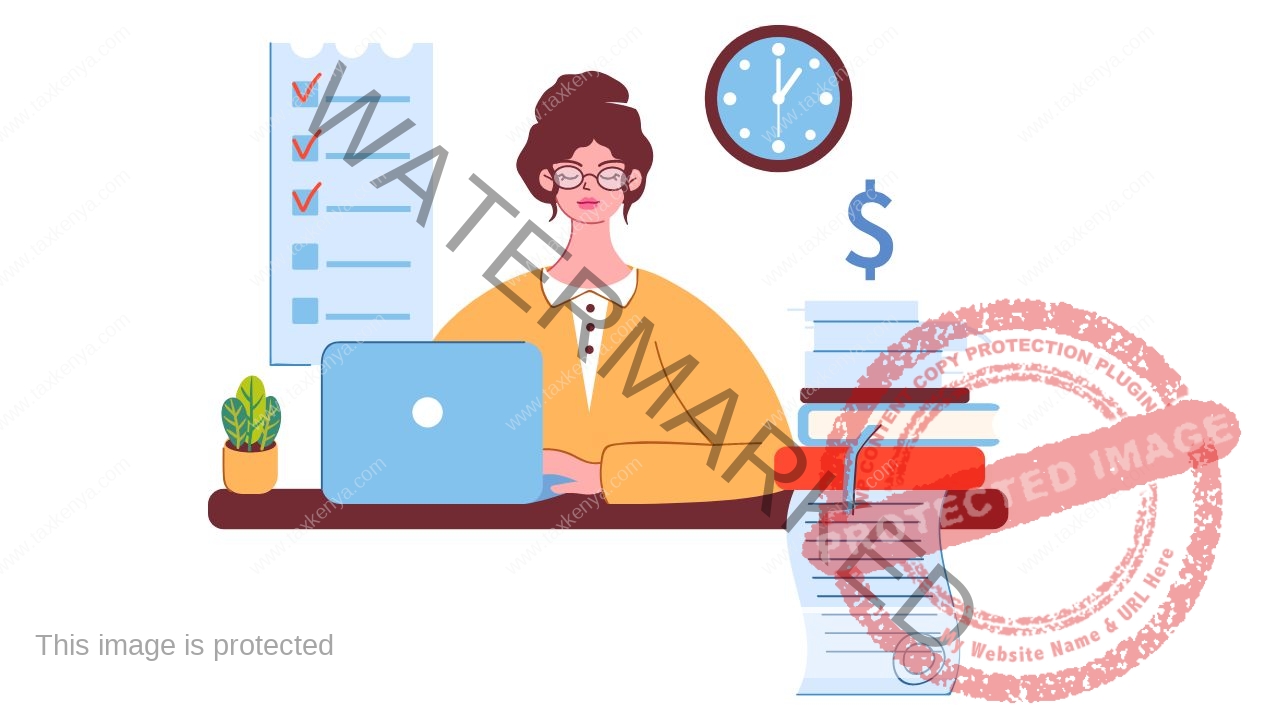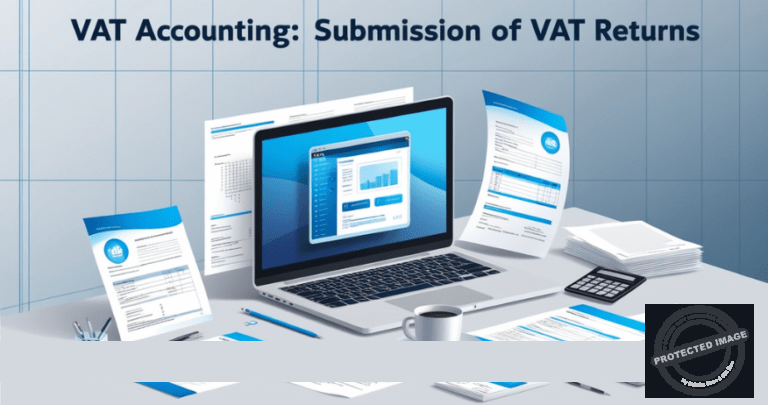Every taxpayer’s dream is to find the government taking steps to streamline tax reporting. Tax reporting can be a daunting and time-consuming task for most taxpayers. People do not start businesses so that they can pay taxes.
They have other reasons, such as making profits, changing the world, becoming famous, solving a problem they identified growing up, etc. It is added responsibility when people are required to comply with tax laws. This becomes challenging when some of the processes are difficult.
a. Affiliate Disclosure: These are affiliate links from which we receive a commission at no cost. Read full Affiliate marketing disclosure HERE.
b. Tax Contents Disclaimer: The tax industry in Kenya is very dynamic. The tax contents in the posts are not professional advice. Read full disclosure HERE.
Taxpayer’s Responsibilities
In addition, to taxpayer’s business responsibilities, they have added four responsibilities:
- Levy the tax by issuing tax invoices.
- Collect the tax from customers and clients.
- Report the tax levied in the tax invoices
- Remit the tax in the invoices.
These responsibilities are expected to be painless for the taxpayers. The government introduced Electronic Tax Registers to enable taxpayers to manage tax responsibilities.
Electronic Tax Registers
Since 2005, Kenyans have been using ETR machines and physical devices (for most taxpayers) to generate tax invoices for Value Added Tax (VAT). The introduction of the ETR was meant to increase revenue collection.
For many taxpayers, using the ETRs has been challenging. The common challenges include using the ETR, gathering the necessary tax information, understanding tax laws and regulations, and ensuring accuracy in the filed return. The ETRs were not enabled to report directly to KRA. The reporting process was manual.
Additionally, the physical nature of the machines has been a problem. Taxpayers who travel had to carry the devices if they needed to issue a tax invoice when away from their offices. Many times, the issuing of the invoices was delayed.
In summary, the ETRs had two problems:
- No direct reporting capacity to the KRA.
- Physical nature of the devices.
- Remote accessibility by the taxpayer.
TIMS
Technology has changed how we do things with the help of automation and AI. With this understanding, the government introduced TIMS in 2022. The least expensive was about kshs 50,000. This expense was expected to be borne by taxpayers. Why should taxpayers pay for collection and reporting expenses instead of the government?
Taxpayers are not paid to collect VAT; therefore, the government should have borne the cost of the TIMs. TIMS is primarily a VAT device, and the taxpayers should have recovered its cost from VAT instead of income tax.
During Kibaki’s government, the cost of ETR was borne by the government, not the taxpayers, with direct recovery from VAT. The TIMS cost and recovery time contribute to the low uptake of TIMS at 57% by the deadline.
The introduction of TIMSs has sorted the problem of reporting to KRA direct on issuing any tax invoice. However, the problems of the physical nature and remote accessibility by the taxpayer were not solved. This has necessitated the introduction of e-TIMS.
e-TIMs
The world has moved, and every person should move with the times, including the government, in tax collection. The government introduced i-Tax in 2015, which is an App. All tax returns and generation of payment slips are done on i-Tax. Kenyan taxpayers have had seven years of interacting with the App.
Therefore, the government should have introduced an App instead of physical TIMS. This should have resolved the problems of the physical nature of the devices and remote accessibility by the taxpayer.
The government has introduced e-TIMs with a rollout date expected 1st February 2023. E-TIMS is a software solution (App) that is web-based. Hopefully, this will resolve the two problems. The App is web-based.
Who can use e-TIMS
e-TIMS is not replacing TIMS. E-TIMS is open for use by all taxpayers. However, some businesses are suited to use physical devices, for example, businesses based in locations that do not have reliable internet connectivity.
Other businesses are suited for e-TIMS, for example, consultants who work and travel out of their offices. Taxpayers will choose what to use depending on their business.
The introduction of e-TIMS will increase the change from ETR from 57% to 100% in conformity with the tax law.
Benefits of using an App for tax reporting
Introducing an App like e-TIMS will streamline the VAT process, making it more convenient, accurate, and less stressful for taxpayers. One of the key benefits of using e-TIMS for tax reporting is convenience and ease of use.
Taxpayers can access the app from anywhere, anytime, and input information as they gather it, making the process less overwhelming. Additionally, automatic calculations and error checks will save time and increase accuracy.
Another benefit of using an App for tax reporting is access to real-time information and updates. Tax laws and regulations are constantly changing, and an app can keep taxpayers informed and up-to-date, reducing the risk of penalties or errors.
Furthermore, using an App can help reduce the stress associated with the process. The app guides taxpayers through the process step-by-step, providing clear instructions and support, leaving less room for uncertainty or confusion.
How to use the App
To use the app to streamline your tax reporting process, there are certain things taxpayers must do.
1. Gather and organize all the necessary information in advance. Have the information on paper and do all the calculations out of the App before you input the data. The instructions in the App should guide you through inputting this information.
2. Take advantage of the app’s timesaving features, such as automatic calculations and error checks. This can help ensure accuracy and reduce the risk of errors.
3. Use the resources provided for troubleshooting and the app’s customer support options in case of any issues or questions that may arise.
Key considerations of e-TIMS
The government is introducing the e-TIMS, and we expect it to have done its work. However, there are vital considerations we expect the government to have taken into account and the taxpayers should be wary of.
- Data security – the government should ensure the app is secure and taxpayers’ personal, business and financial information is protected.
- Integration with i-Tax – i-Tax has that unique ‘hanging’ problem when it is not accessible. The ‘hanging’ problem may worsen with increased real-time reporting.
- Integration with financial tools – the App should be integrated with mobile money, and the payable tax amount ceiling should be increased from the current kshs 70,000 to the actual tax payable. KRA can work with mobile money providers for tax payment purposes.
- Information import – the App can connect and import information from other financial accounts, such as bank or investment accounts, to save time and increase accuracy.
- Resources for troubleshooting – technology is still evolving. KRA should ensure taxpayers will have resources for troubleshooting. For example, a list of frequently asked questions.
- Real-time updates – for any changes in tax law, for example, tax rates, the KRA should ensure it is implemented immediately.
Lorem ipsum dolor sit amet, consectetur adipiscing elit. Ut elit tellus, luctus nec ullamcorper mattis, pulvinar dapibus leo.
- Error checking – the App should be configured to pick errors immediately.
- Customer support – this is an App by KRA. Customer support should be real-time so that taxpayers are not penalised unnecessarily.
Conclusion
Using an app for tax reporting can provide taxpayers with a convenient, accurate, and stress-free experience. With features such as real-time updates, error checking, and customer support, taxpayers can feel confident and in control of the tax reporting process.
This will also help streamline the tax process, and the government will benefit from reduced-cost audits and tax receipts in real-time. e-TIMS will be a win-win for taxpayers and the government.
Thank you for reading the article.
Let us know your thoughts in the comments.
Dr. Wakaguyu Wa Kiburi.
taxkenya@gmail.com
Take A Quiz
[ays_quiz id=”4″]




